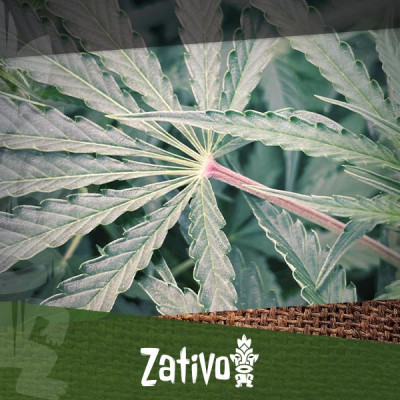Don't have an account?
Register NowYou have to add to cart at least 5 bottles or any program to make checkout.
- BlogWhat You Need To Know About Red And Purple Cannabis Stems
What You Need To Know About Red And Purple Cannabis Stems
Published: August 20th, 2022
Categories:
Cannabis Cultivation
Though cannabis is often green, it is famed for being able to express other beautiful hues too. Most famously perhaps, weed can become purple. However, it can also turn red, brown, and pink.
In many cases, weed exhibiting these colours is nothing to worry about. However, discolouration of cannabis stems, especially in strains that are not genetically predisposed to such events, can be something worth investigating.
What Causes Red and Purple Stems on Cannabis?
There are several reasons why the stems of a cannabis plant might turn purple or red. Now, bear in mind that there is, generally, a difference between coloured stems compared to coloured leaves and flowers. For the most part, vibrantly coloured leaves and flowers are caused by environmental expression of specific genes, and are nothing to worry about.
While the same can be said for stems in some cases, it might also be a symptom of an underlying problem. That being said, it could also be both. Often, with stems, leaves, and flowers, a mixture of genetic and environmental causes bring out these delicious tones.
Below we explore the causes and solutions of red and purple stems on cannabis plants.
Low Temperatures

Temperature fluctuation can cause parts of the cannabis plant to take on colours other than green, especially in genetics that are already primed to express such tones. These can range from red, to pink, to purple, brown, and almost black. In fact, some growers will deliberately expose their plants to colder temperatures at night to bring out these colourful phenotypes. Changes of around 5 to 10 degrees Celsius (between day and night) can cause specimens to exhibit these hues.
On the whole, it’s nothing to worry about in itself. If accompanied by slowed or stunted growth, though, then it may be too cold for your plants to grow properly.
Solution
Solving this is pretty straightforward. Keep the temperatures consistent between day and night. Or, if you do want to lower the nighttime temperatures a bit, make sure it isn’t too dramatic. Note that cannabis starts to struggle at temperatures lower than around 15°C, and it really starts to stall at 10°C.
Nutrient Deficiency
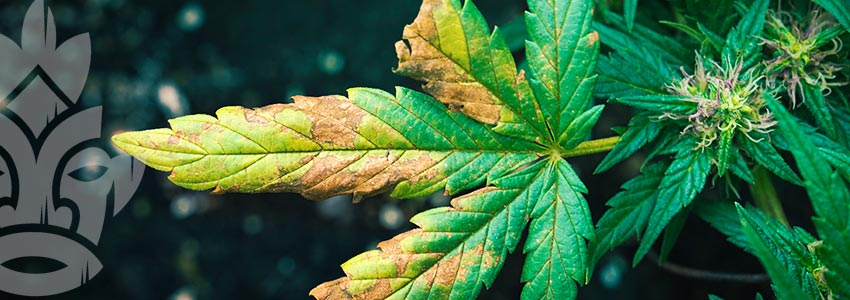
Nutrient deficiency, whether the result of inadequate feeding or nutrient lockout, can cause stems to discolour, typically turning red. In this case, it is indicative of a problem. To confirm that you have some sort of feeding issue, look to the leaves. If they’re yellowing or drooping, it’s likely you need to take action to prevent plant health from quickly going into a tailspin.
Solution
If you believe your plants are dealing with a deficiency due to underfeeding, the solution is pretty simple: give them more food. Magnesium and phosphorus appear to be specifically linked to reddening of the stems, so starting with these could be a good way to go.
However, don’t get overzealous. More does not equal better when it comes to fertilising cannabis. Instead, add a little and see how your plants fare. Never add more than the fertiliser of your choice instructs. This will have the adverse effect of preventing your plants from uptaking food. In this case, ironically, deficiencies can also occur, as your plants aren’t actually using any of the nutrients in the substrate. To solve this, the substrate must be flushed with pure, pH-balanced water, before nutrients can slowly be added back in.
pH Level
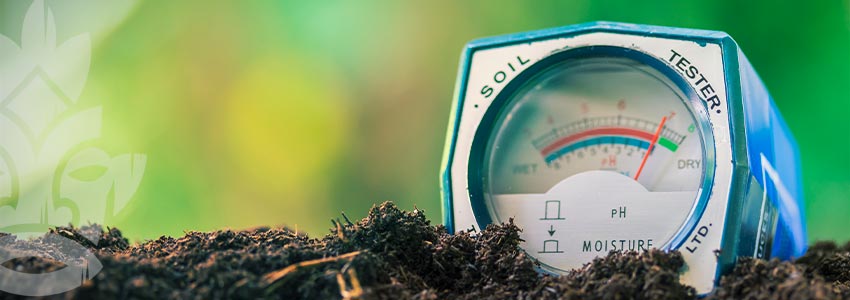
If the pH level strays too far in either direction, the plant’s ability to absorb food through its roots will be reduced or interrupted completely. This will lead to nutrient lockout and the same symptoms mentioned directly above, including red and purple stems.
Solution
First, invest in a pH meter to determine the pH level of your soil. This will tell you if it’s too high or too low. Cannabis growing in soil likes a pH between 6.0 and 7.0.
If it’s too low (unlikely), then you can just add some “pH up” solution; even plain water might do the trick, as it has a pH of around 7.0.
If, on the other hand, the pH is too high—which is much more likely—then you’ll need to add some “pH down” solution to the soil. To judge the results, measure the runoff that drains out of the bottom of the pot as you water. Once this shows an appropriate pH level, you should be good to go.
Come back and check the soil later just to be sure, and adjust as necessary. Make sure going forward that you always test the pH of your nutrient solution, water, and substrate to avoid any issues.
Plant Stress
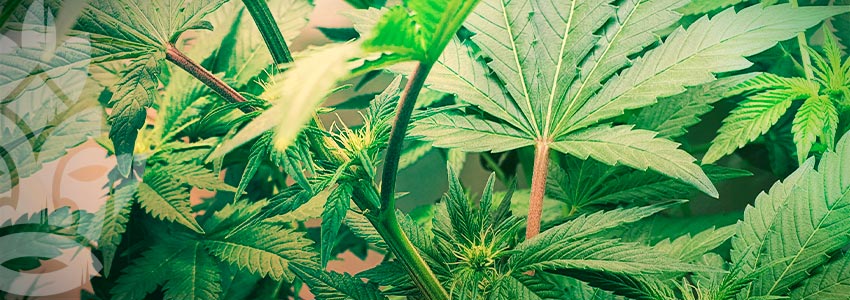
All manner of stressors can cause a plant’s stems to turn red and purple. Overwatering, underwatering, cold temperatures, pest infestations—the list goes on. These issues can have direct or indirect effects that lead to stem and foliage discolouration. But how do you determine the specific cause, and the solution?
Solution
First, familiarise yourself with your plant’s genetics. Does it have the propensity to exhibit coloured stems? If so, what tends to bring this trait out? Then, narrow it down from there. Most forms of stress come with other signs and symptoms too. For instance, if you’re overwatering, the leaves at the bottom will discolour first. If you’re underwatering, they will discolour uniformly across the plant, and go crispy.
If you spot little creatures on or around your plants, and the stems are discolouring, then an infestation may be to blame.
Pathogens
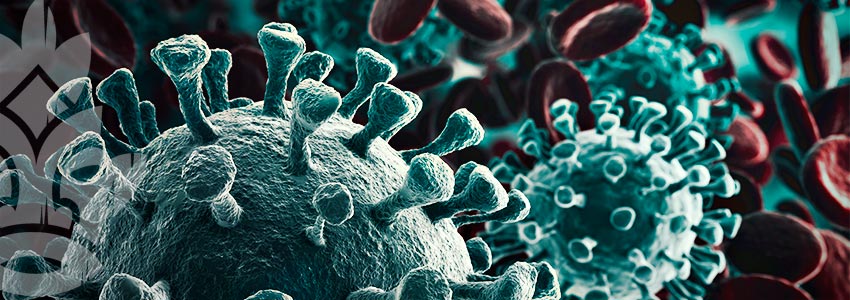
The parasitic fungus Fusarium can cause the stems of cannabis plants to turn purple. Far from a desirable aesthetic trait, this can be problematic. The discolouration of the stems happens as a result of necrosis of the vascular system—not good! This symptom is one of the later to appear, preceded by leaf spotting, leaf curling, and wilt.
Solution
We’ve got bad news for you: Fusarium has no cure. Once this fungus has taken hold, there’s nothing you can do about it, aside from get rid of any affected plants.
However, there are steps you can take to avoid this parasite taking hold in the first place. Primarily, a plant with a healthy immune system will be much better prepared to fight off a Fusarium infection compared to a weak one.
To keep plants healthy, feed them thoughtfully, keep pH levels correct, and ensure they’re not being watered too much. You can also give them a helping hand by planting them in pots and keeping the environment more or less sterile, especially while they're still young. Older plants are at a lower risk of developing an infection, and are generally a little more robust.
Light Intensity

Cannabis stems can turn reddish in response to too much UV. This is simply a defence mechanism, much like human skin tanning. On the whole, it isn’t much to worry about. If it’s just a few stems on some upper branches, then you can rest easy. If it’s much of the upper plant, though, then your lighting setup might need adjusting.
Solution
The simplest thing to do in this case is to move the light further away from the plant canopy. In most cases, this should suffice. In fact, as long as you’re using proper grow lights, you shouldn't run into any serious issues. If, for some reason, you can’t move the lights further away, then dim them a little. Don’t worry that this will adversely affect your crop. If your plants are reacting to light that’s too bright, they’ll benefit from a little dimming anyway.
Genetics

As mentioned, some plants are genetically predisposed to changing colour. In some instances, these phenotypes can reveal themselves at the slightest sign of stress—such as cool nights. In other instances, it may simply be the way they are.
Many growers specifically choose strains prone to taking on beautiful, dark hues, as it makes for great grow room and bag appeal!
Solution
There is no solution to this, other than using strains that don’t usually exhibit these traits. If purple/red stems are caused by genetics, then you have nothing to worry about.
Colourful Stems: Something to Be Concerned About?
On the whole, no. That being said, some instances may signal cause for alarm. In such cases, there will likely be accompanying symptoms specific to that stressor or threat, which you can use to identify the issue at hand. In instances where stems change colour but the plant remains otherwise healthy, you can rest easy.

